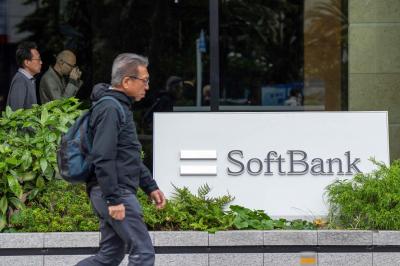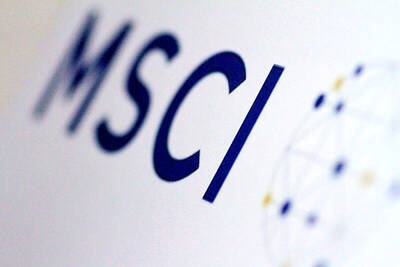The global market size of 3D printing will more than triple over the next five years due to the increasing adoption of the technology, Citigroup Global Markets Inc said in a report on Monday.
The forecast came as several early-adopters generated higher consumer curiosity and interest recently, which Citigroup said would likely evolve into a “significant new market segment” in the long term.
The 3D printing industry is “ready to push beyond prototyping,” Citigroup analyst Kenneth Wong said in a report, titled As seen on TV: 3D printing ready for prime time.
In the US, General Electric Co is incorporating 3D-printed components in its new Leap engine and Phonak Hearing Systems is using similar technology to produce hearing aids, while a unit of Taiwanese electronics conglomerate New Kinpo Group (新金寶集團) is this week launching its 3D printer at a cost of NT$15,000 (US$500) per unit.
Citigroup forecast the 3D printing market would expand three-fold by 2017 from the current US$2 billion, while market research consultancy Wohlers Associates Inc predicted the market to expand by a 20 percent compound annual growth rate (CAGR) between this year and 2019.
The use of 3D printing and additive manufacturing seem to be “on the cusp of seeing much broader adoption across more upstream production applications and the consumer end market,” San Francisco, California-based Wong wrote in the report.
Additive manufacturing refers to the process of repeatedly applying thin layers of materials to build objects generated from 3D computer animated design (CAD) files. The main materials involved in the printing process include thermoplastic filaments, photopolymer resins and powdered sand and metals.
Citigroup said the promising market opportunity for additive manufacturing is beginning to attract customers beyond the traditional concept modeling and prototype engineering.
“Larger manufacturing companies are looking to add elements of additive manufacturing into the production process and specialty end-markets, such as medical, dental and jewelry, are already printing end-use parts and goods for commercial use,” Wong wrote.
Demand will accelerate when consumer awareness of the technology increases significantly, he said.
Yuanta Investment Consulting Co (元大投顧) analyst Calvin Wei (魏建發) said that low-cost 3D printers launched by companies such as New Kinpo’s subsidiary XYZ Printing Inc (三緯) could also help generate excitement in the market.
The Taiwanese company's retail price of NT$15,000 is much lower than the between NT$42,000 and NT$66,000 of its US and Japanese peers, such as Rock Hill, South Carolina-based 3D Systems Corp and Yokohama-based Japanese company Opencube Inc, he said yesterday in a note.

PERSISTENT RUMORS: Nvidia’s CEO said the firm is not in talks to sell AI chips to China, but he would welcome a change in US policy barring the activity Nvidia Corp CEO Jensen Huang (黃仁勳) said his company is not in discussions to sell its Blackwell artificial intelligence (AI) chips to Chinese firms, waving off speculation it is trying to engineer a return to the world’s largest semiconductor market. Huang, who arrived in Taiwan yesterday ahead of meetings with longtime partner Taiwan Semiconductor Manufacturing Co (TSMC, 台積電), took the opportunity to clarify recent comments about the US-China AI race. The Nvidia head caused a stir in an interview this week with the Financial Times, in which he was quoted as saying “China will win” the AI race. Huang yesterday said

Japanese technology giant Softbank Group Corp said Tuesday it has sold its stake in Nvidia Corp, raising US$5.8 billion to pour into other investments. It also reported its profit nearly tripled in the first half of this fiscal year from a year earlier. Tokyo-based Softbank said it sold the stake in Silicon Vally-based Nvidia last month, a move that reflects its shift in focus to OpenAI, owner of the artificial intelligence (AI) chatbot ChatGPT. Softbank reported its profit in the April-to-September period soared to about 2.5 trillion yen (about US$13 billion). Its sales for the six month period rose 7.7 percent year-on-year

Nissan Motor Co has agreed to sell its global headquarters in Yokohama for ¥97 billion (US$630 million) to a group sponsored by Taiwanese autoparts maker Minth Group (敏實集團), as the struggling automaker seeks to shore up its financial position. The acquisition is led by a special purchase company managed by KJR Management Ltd, a Japanese real-estate unit of private equity giant KKR & Co, people familiar with the matter said. KJR said it would act as asset manager together with Mizuho Real Estate Management Co. Nissan is undergoing a broad cost-cutting campaign by eliminating jobs and shuttering plants as it grapples

MORE WEIGHT: The national weighting was raised in one index while holding steady in two others, while several companies rose or fell in prominence MSCI Inc, a global index provider, has raised Taiwan’s weighting in one of its major indices and left the country’s weighting unchanged in two other indices after a regular index review. In a statement released on Thursday, MSCI said it has upgraded Taiwan’s weighting in the MSCI All-Country World Index by 0.02 percentage points to 2.25 percent, while maintaining the weighting in the MSCI Emerging Markets Index, the most closely watched by foreign institutional investors, at 20.46 percent. Additionally, the index provider has left Taiwan’s weighting in the MSCI All-Country Asia ex-Japan Index unchanged at 23.15 percent. The latest index adjustments are to